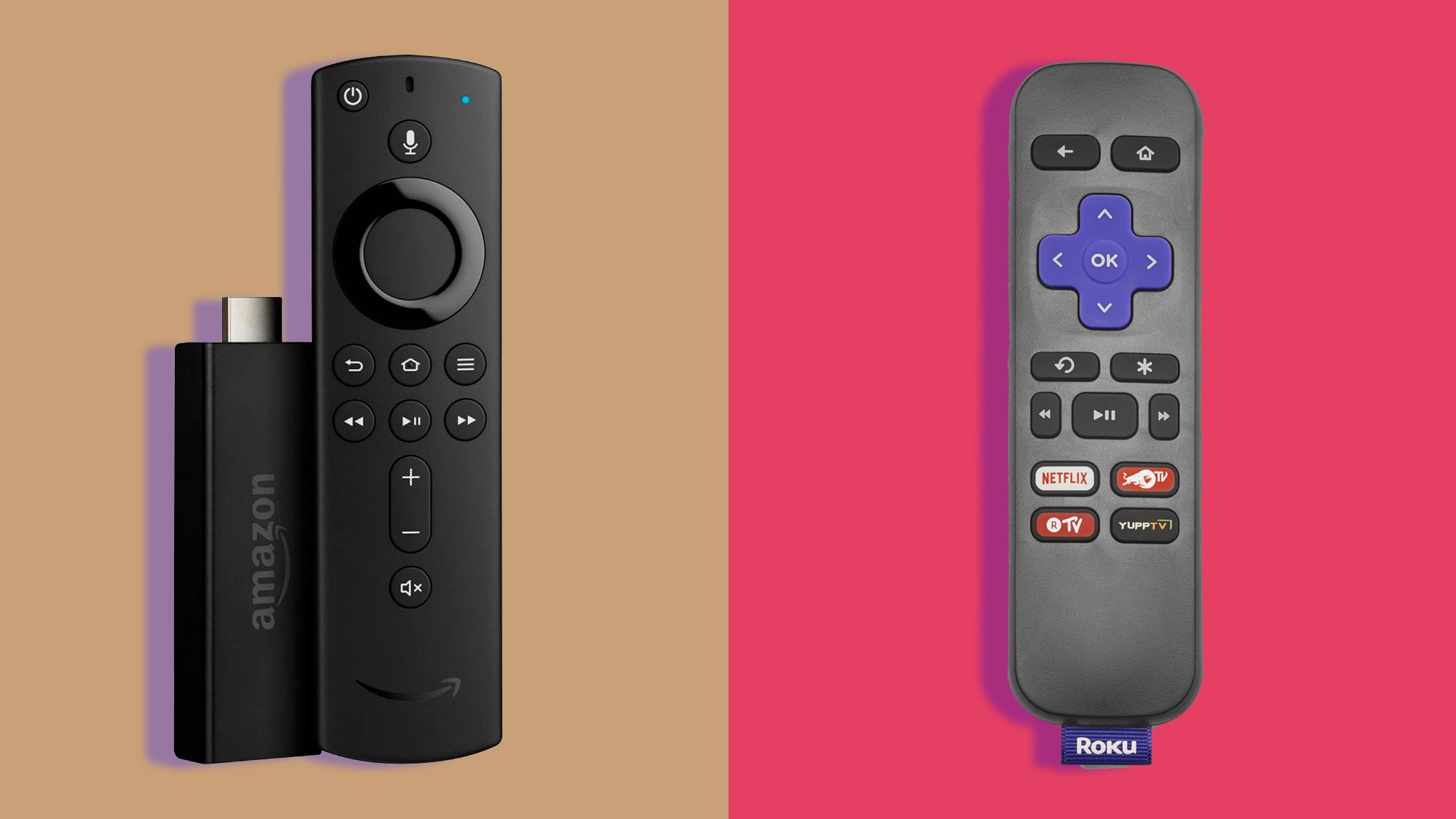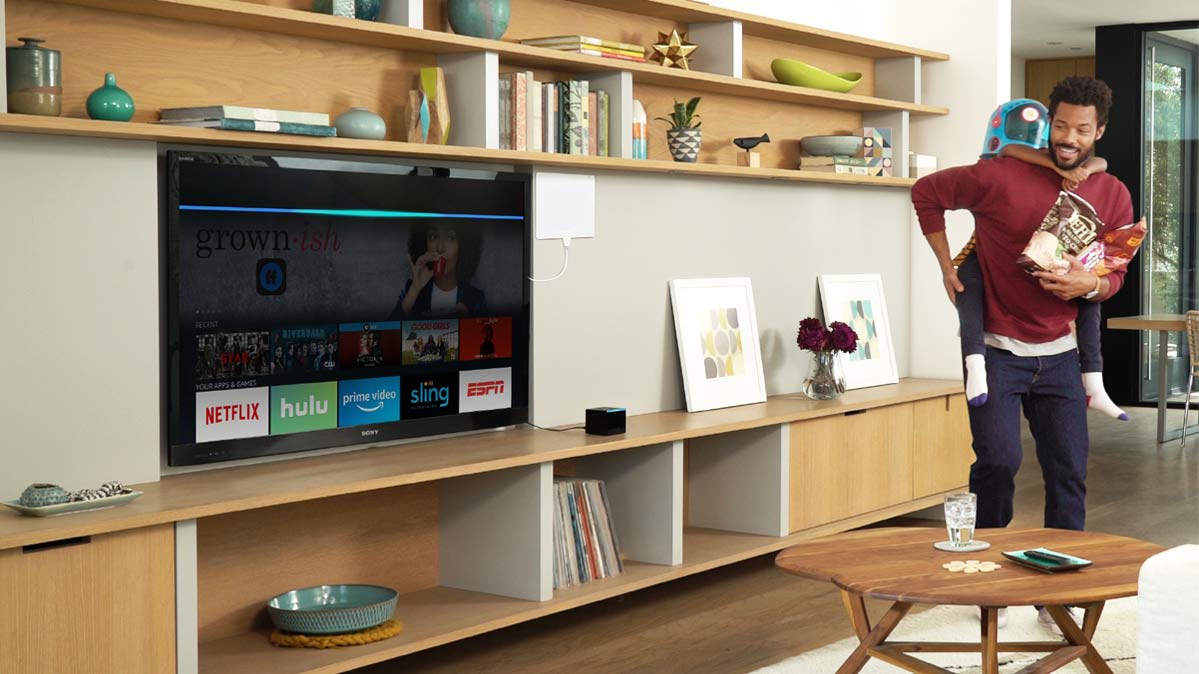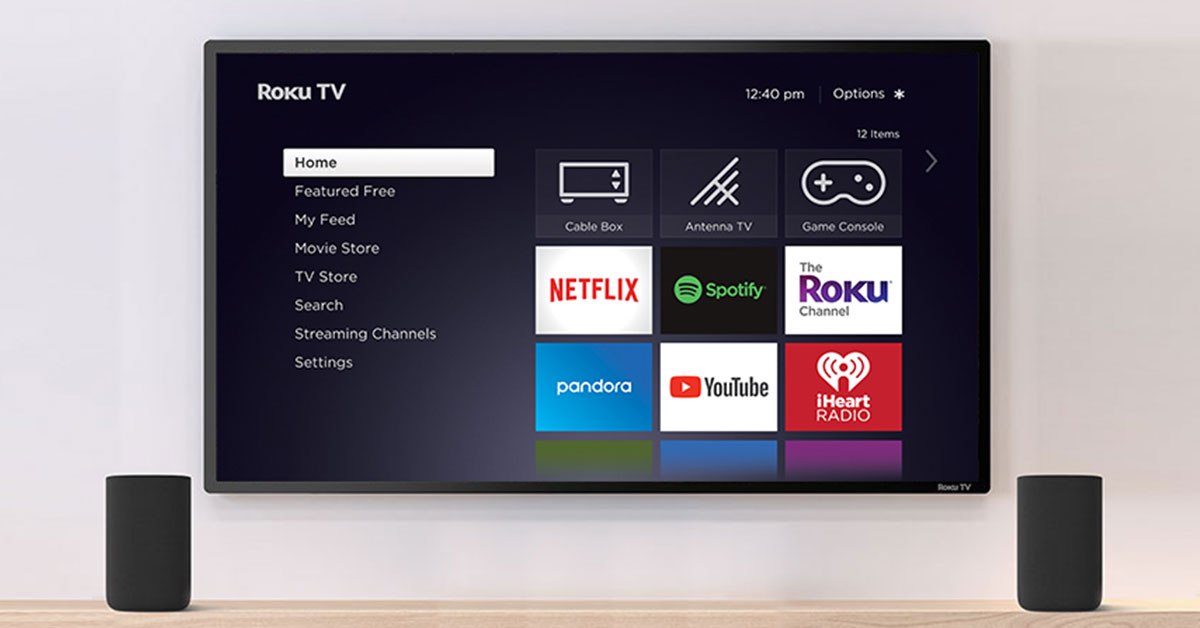
Roku vs Fire TV Stick: the biggest battle in video streaming devices today. Sure, Chromecast and Apple TV work their way into the fray, but really the two biggest platforms for cord-cutters are Roku's budget boxes and Amazon's thrifty sticks.
The problem most folks have, however, is that because the devices themselves seem so similar, it can be tough when choosing which one you should buy.
The good news is that you can't go wrong with either. The new crop of Amazon Fire TV Sticks like the Amazon Fire TV Stick (2020) and Amazon Fire TV Stick Lite are affordable options for folks who want to stream Amazon Prime Video or Netflix in 1080p, while Roku's latest crop of streamers offer awesome 4K resolution.
We'll break down all the differences below, but if you only take one thing away from this article it should be that Amazon Fire TV devices are a great fit for Amazon Prime subscribers and Amazon Echo owners, while Roku is a better fit for folks who plan on streaming 4K HDR content and plan on subscribing to a dozen-or-so services.
How do you know which streaming video player is right for you? We’re here to help break down the differences between the hardware and highlight the pros and cons of each platform. Consider this your guide to Streaming Hardware 101.
What are the key differences?
When you think about Amazon Fire TV, you should really be thinking about the Amazon Video streaming service and Alexa voice assistant, as those are its defining features. Sure, Roku can also access Amazon Video, but the streaming service is brought front and center on Amazon streaming hardware. That’s great if you’re an Amazon Prime subscriber… and maybe not so great if you don’t want to pony up for Amazon’s subscription service.
That said, however you slice it, having Alexa on a streaming video player is pretty cool. It works almost exactly the same as a smart speaker, except you can ask Alexa to call up some videos for you, too. Add to that the ability to manage your calendar and keep track of your shopping lists, and it’s easy to see why having Alexa is a huge boon for Fire TV.
Get daily insight, inspiration and deals in your inbox
Sign up for breaking news, reviews, opinion, top tech deals, and more.
If you're picking between the Amazon Fire TV devices, you just want to ask yourself if you want 1080p streaming or if you want 4K streaming. If it's the former, you should go for the aforementioned Amazon Fire TV Stick or Fire TV Stick Lite, while folks interested in the latter should check out the Amazon Fire TV Stick 4K and Amazon Fire TV Cube.

The key selling points for Roku are that it’s platform-agnostic - i.e. Roku doesn’t care which streaming service you use and makes almost all of them available on its hardware - and now has a free, ad-supported streaming service of its own called The Roku Channel that’s available right out of the box. That’s great for cord-cutters, and folks who want extra options when looking for something to watch.
It also has a slightly better search function that scans more subscription services for content, and it has a built-in feature that tracks when shows and movies come to the streaming services you subscribe to - a great feature when you want to find something new to watch and don't want to check each service individually.
In terms of Roku devices, you've got the high-end Roku Ultra, mid-range Roku Premiere and Roku Express alongside the Roku Streaming Stick+ that does 4K/HDR streaming with a longer range than the Roku Premiere, but doesn't have Dolby Vision like the Roku Ultra.
Neither Amazon or Roku are particularly great at playing games - you’ll want an Nvidia Shield or Apple TV for that - however both can access Kodi by side-loading.
Which one is easier to use?
Now, obviously, ease-of-use is pretty subjective - some things that come easy to us won’t come easy to you necessarily - but, that caveat aside, we feel that Roku is the easier of the two platforms. It boots you right into the home menu where you can see all the apps you have downloaded, and the app store is visible immediately. The interface is simpler and although a bit dated at this point, it remains incredibly simple.
That’s not to say Amazon Fire TV’s interface is particularly difficult to use - it’s not - but it does place a greater emphasis on Amazon Prime content and finding anything else can take a bit of effort / knowhow. Still, if you know where to look you can find apps for Netflix, PlayStation Vue, Sling TV and all the rest and having content right up front means it’s a bit faster to turn it on and jump right into something to watch. Plus you can readily download other apps, like Amazon Fire TV VPNs.
It’s worth pointing out here that, unlike Chromecast and Chromecast Ultra, every single member of the Amazon Fire TV and Roku family of devices comes with a remote. That traditional control scheme makes them a bit easier for the average non-techie to pick up and use, plus the built-in microphone adds a convenience factor for searching for something to watch. We’ll cover more in the next section, but it’s worth pointing out that they’re both easier to use than some other streaming solutions out there.

Which one has more content?
Unless we count up every video on every streaming service on each of these two platforms, it’s impossible to know which of the two has more content to watch. That being said, knowing which streaming services are on each platform and around how much content those have can give us a rough estimate.
Both platforms have access to all of the main services Netflix, Amazon Prime, Hulu, Sling TV, HBO Go/Now and YouTube, but only Roku also has access to The Roku Channel, that free, ad-supported streaming service we mentioned earlier. It’s also worth pointing out that Roku has more channels than any other platform - though, what Roku considers a ‘channel’ is usually just a bespoke app full of videos you can find on YouTube. Still, if you just want an entire playlist of old Western films, Roku has them and Amazon doesn’t.
Of course, it is a bit easier to find content on Roku than it is on Amazon Fire TV - Roku’s search scans a massive number of streaming services and lists them by price with the cheapest options and the ones you subscribe to up front. That’s a great system and one that could save you money in the long run. (It’s worth noting that Amazon has a comprehensive search feature, too, but it does place more of an emphasis on Amazon Video results.)

Which one is cheaper?
If you’re comparing the cheapest Roku player to the cheapest Amazon Fire TV player, it’s a tie: you can get both the Roku Express and Amazon Fire TV Stick for just $29 (£25). These are both really good HD streaming devices that will impress folks who still have an HD TV.
Of course, if you want a 4K streaming device, you’ll need to step up to the slightly more expensive Roku Premiere ($35) or Amazon Fire TV Stick 4K ($39/£49). You can expect 4K/HDR support from both devices and the entire content library on both devices.
If you’re looking for the top-tier players for the best playback experience, the flagship Roku Ultra will set you back $99 while the Amazon Fire TV Cube with Alexa will only cost $79 - though, for now, both are US-exclusive. Either way, it’s a pretty good deal for two of the best streaming devices on the planet.
Which one is better?
This all depends on who you’re buying for.
If you’re buying for someone who’s not that technical, you might want to get with the most basic Roku streaming device. It’s simple to use and cheap enough that you won’t be breaking the bank.
But if you're someone who's deeply entrenched in the Amazon ecosystem with Alexa devices everywhere and a recurring Amazon Prime subscription, then the Amazon Fire TV family of devices is probably your better option.
- Open up a world of content with an Amazon Fire TV Stick VPN
Nick Pino is Managing Editor, TV and AV for TechRadar's sister site, Tom's Guide. Previously, he was the Senior Editor of Home Entertainment at TechRadar, covering TVs, headphones, speakers, video games, VR and streaming devices. He's also written for GamesRadar+, Official Xbox Magazine, PC Gamer and other outlets over the last decade, and he has a degree in computer science he's not using if anyone wants it.
